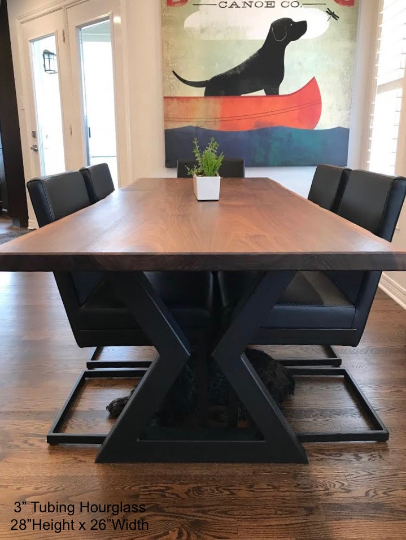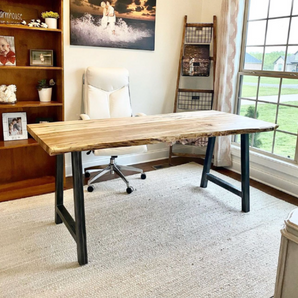Selecting the Perfect Dining Table: What Styles Job Best for Your Home?
Choosing the excellent eating table for your home can be a nuanced procedure that balances appearances and functionality. To browse these selections properly and discover a table that truly matches your home, consider the adhering to elements in information.
Analyzing Your Space
Reviewing the dimensions and design of your eating location is an important very first step in picking the perfect eating table. Begin by gauging the size and size of the area, accounting for doorways, windows, and other building attributes that could influence table placement. This guarantees that your table not only fits however likewise permits comfy activity around it.
Take into consideration the number of individuals you typically entertain. A table ought to accommodate your house's day-to-day demands while offering sufficient flexibility for occasional visitors. As a regulation of thumb, allocate at the very least 24 inches of table size per individual to make certain a comfy eating experience.
It's also vital to preserve ideal clearance around the table. Preferably, there ought to go to least 36 inches between the table side and wall surfaces or various other furniture, enabling easy access and activity. For spaces where chairs with arms or added storage devices like buffets are entailed, boosting this clearance to 48 inches is advisable.
Lights and atmosphere play significant functions. Make certain that your table aligns with existing lighting fixtures or plan for ample illumination options. This extensive spatial analysis guarantees that your table not just fits literally however additionally integrates with your space's general capability and aesthetic.
Popular Table Styles

Standard dining tables commonly feature elaborate information, curved legs, and abundant timber coatings, stimulating a sense of timeless beauty. They are perfect for homes with classic decor or those looking to include a touch of refinement to their eating area.
Modern eating tables focus on simplicity and clean lines, frequently incorporating products like glass and steel. These tables are perfect for contemporary spaces, providing a streamlined and minimalist appearance that complements minimal style viewpoints.
Rustic dining tables, on the other hand, emphasize all-natural materials and a handmade look - dining room table legs. They typically feature redeemed wood and a troubled surface, creating a cozy and inviting ambience. These tables work well in farmhouse-style homes or those looking for a relaxing, organic feeling
Industrial eating tables incorporate resources such as steel and wood, typically showcasing a practical aesthetic. This design is well-suited for loft spaces or urban areas, adding a touch of sturdy charm and sturdiness to the dining experience.
Each design supplies unique benefits, making it crucial to choose one that lines up with your home's total style and your individual choices.
Material Choices
When choosing a dining table, the option of material plays a vital role in determining both the table's visual appeals and performance. Timber, steel, glass, and composite products each deal special benefits and challenges, making it important to line up the product with your home's design and lifestyle demands.
Timber is a timeless and flexible alternative, readily available in varieties such as oak, walnut, and mahogany. Known for its resilience and warmth, timber enhances both standard and modern insides. Nevertheless, it calls for routine upkeep to stop scrapes and bending.
Steel tables, frequently crafted from stainless steel, light weight aluminum, or wrought iron, are praised for their modern charm and effectiveness. They are specifically fit for industrial or minimal setups yet can be vulnerable to dents and might really feel cold to the touch.
Glass eating tables bring an air of beauty and openness, ideal for smaller areas as they develop an impression of more space. While very easy to clean, glass can be vulnerable to smudges and needs cautious managing to stay clear of chips and fractures.
Composite products, such as MDF and plywood, offer economical and adjustable remedies, though they might do not have the durability of natural materials. Picking the appropriate product guarantees your table is both a useful property and an aesthetic pleasure.
Sizes And Shape Factors To Consider
After establishing the proper material for your eating table, the following factor to consider is choosing the best form and dimension to fit your space. The form of the table dramatically affects the area's aesthetic and functionality. Rectangle-shaped tables, the most common form, are suitable for larger rooms and can suit a greater number of visitors. They likewise enable an extra formal eating experience. On the other hand, round tables foster a sense of affection and are outstanding for smaller sized dining locations, motivating conversation by removing corners and websites making every person feel just as included.
Dimension is similarly vital and should be dictated by both the room's measurements and the variety of people you plan to seat consistently. As a regulation of thumb, allocate a minimum of 24 inches of table size per person to make certain comfy dining. Furthermore, take into consideration the table's clearance space: there ought to be at least 36 inches between the table edge and the walls or various other furnishings. This ensures that diners can move conveniently without really feeling cramped. Prolonging tables supply flexibility if you frequently hold larger events, giving added seats when required without occupying extra area daily. Choosing the ideal sizes and shape makes certain both practicality and aesthetic harmony in your eating why not find out more location.
Matching Your Style
Picking a table that balances with your existing design is pivotal in developing a cohesive and inviting room. Begin by evaluating your current interior decoration style, whether it be modern, typical, rustic, or eclectic. The table must complement the total aesthetic, not compete with it. For example, a sleek, minimal table with clean lines is ideal for a modern-day home, while a vintage, elaborate table matches a much more traditional setup.
Shade and product are equally considerable. If your decor features cozy tones and all-natural materials, think about a wood table to boost the organic feel. Alternatively, a glass or steel table may be better suited in an area dominated by great shades and industrial elements. Focus on the coating, as it should mirror other furnishings and fixtures to preserve consistency.
Appearance plays a crucial role. A rough-hewn, reclaimed wood table can add character to a rustic room, while a polished marble surface can elevate an elegant dining area. Think about the range and proportion of the table in relation to the room size and existing furnishings. A well-matched table not just improves visual appeal yet additionally improves the general dining experience.

Verdict
Selecting the suitable dining table necessitates cautious consideration of area, design, materials, form, and dimension. go to this website Conventional tables complement classic interiors with rich timber surfaces, while modern-day tables fit modern settings with glass and steel.